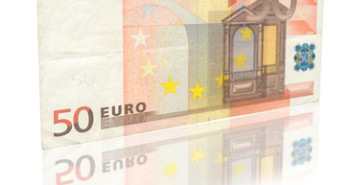EUR/USD is steady on Tuesday, as the pair trades in the mid-1.37 range in the European session. German GDP met the forecast, but Italian Retail Sales posted a decline and missed the estimate. We’ll get a look at the EU Economic Forecasts later in the day. In the US, today’s highlight is CB Consumer Confidence.
Here is a quick update on the technical situation, indicators, and market sentiment that moves euro/dollar.
EUR/USD Technical
- EUR/USD was steady during Asian trading. The pair edged higher late in the session and closed at 1.3750. The pair is unchanged in the European session.
Current range: 1.37 to 1.3773.
Further levels in both directions:Â Â 
- Below: 1.37, 1.3650, 1.3580, 1.3515, 1.3450 and 1.34
- Above: 1.3773, 1.38, 1.3830, 1.3895, 13915 and 1.40.
- 1.3773 now becomes a double top, and thus a stronger resistance line.
- 1.37 is providing support. 1.3650 is stronger.
EUR/USD Fundamentals
- 7:00 German Final GDP. Exp. 0.4%. Actual 0.4%.
- 9:00 Italian Retail Sales. Exp. 0.4%. Actual -0.3%.
- 12:45 EU Economic Forecasts.
- 14:00 US S&P/CS Composite-20 HPI. Exp. 13.3%.
- 14:00 US HPI. Exp. 0.4%.
- 15:00Â US CB Consumer Confidence. Exp. 80.2 points.
- 15:00 US Richmond Manufacturing Index. Exp. 13 points.
- 15:10 US FOMC Member Daniel Tarullo Speaks.
*All times are GMT
For more events and lines, see the Euro to dollar forecast.
EUR/USD Sentiment
- German business sentiment improves: Germany’s No. 1 Think Tank IFO continues to climb, in contrast to the German ZEW Economic Sentiment, which took a tumble in January. For those trading the euro as if it were the Deutschmark, this was good news. It’s important to note that PMIs for Germany and France came out short of expectations, as the Eurozone’s troubles continue.
- ECB hints at negative rates: ECB Governing Council member Ignazio Visco said that a negative deposit rate is on the agenda in the upcoming March meeting (currently the rate is at 0%). While the ECB may not take action, this comment certainly weighed on the euro. It joins some a similar hint from his colleague and some complaints about the euro’s strength from the head of the Eurogroup. The key to the ECB decision is the flash CPI figure for February, which will be released on Friday. The German CPI release on Thursday will also have a strong impact.
- Markets watching developments in the Ukraine: The Ukrainian president was practically overthrown and is fleeing an arrest warrant. He may be in Russia. With the Winter Olympic Games now over in Sochi, Russian president Putin may get involved in his neighbor’s affairs. Political, military and economic turmoil (such as a default of the Ukraine on its debt) may trigger a contagion effect.
- Mixed numbers out of the US: Unemployment Claims dropped slightly last week, coming in at 336 thousand. After some recent weak releases on the employment front, the markets will be pleased with this release. Meanwhile, inflation indicators continue to raise concerns, as Core CPI posted a paltry gain of 0.1% for the second straight month. Weak inflation levels are indicative of weak economic growth and could spell trouble for the US recovery. On the manufacturing front, the Philly Fed Manufacturing Index slumped badly, posting a decline of -6.3 points, compared to +9.4 points a month earlier.
- US housing data raises concerns: Recent US numbers have not impressed, and the weak numbers are being felt in the housing sector. Building Permits slid to a five-month low in January, dropping to 0.94 million. The estimate stood at 0.98 million. Existing Home Sales looked awful, dropping to 4.62 million in January, compared to 4.87 million a month earlier. This was well short of the estimate of 4.73 million, and the lowest reading from the key indicator since July 2012. Is the housing sector experiencing a downturn? The markets will be hoping for better news from New Home Sales, which will be released on Wednesday.
- Federal Reserve may adjust forward guidance: Last week’s Federal Reserve minutes indicated that interest rates are unlikely to rise, even if unemployment drops to 6.5%. Previously, the Fed had said it would consider raising rates at the 6.5% threshold, but with unemployment falling faster than expected, Fed policymakers agreed that it would “soon be appropriate†to revise the Fed’s forward guidance regarding interest rate levels. The minutes also indicated that the Fed will likely continue trimming QE, barring any downturns in the economy.
More:Â Video: Game changing EUR event, USD/JPY before the burst and more



